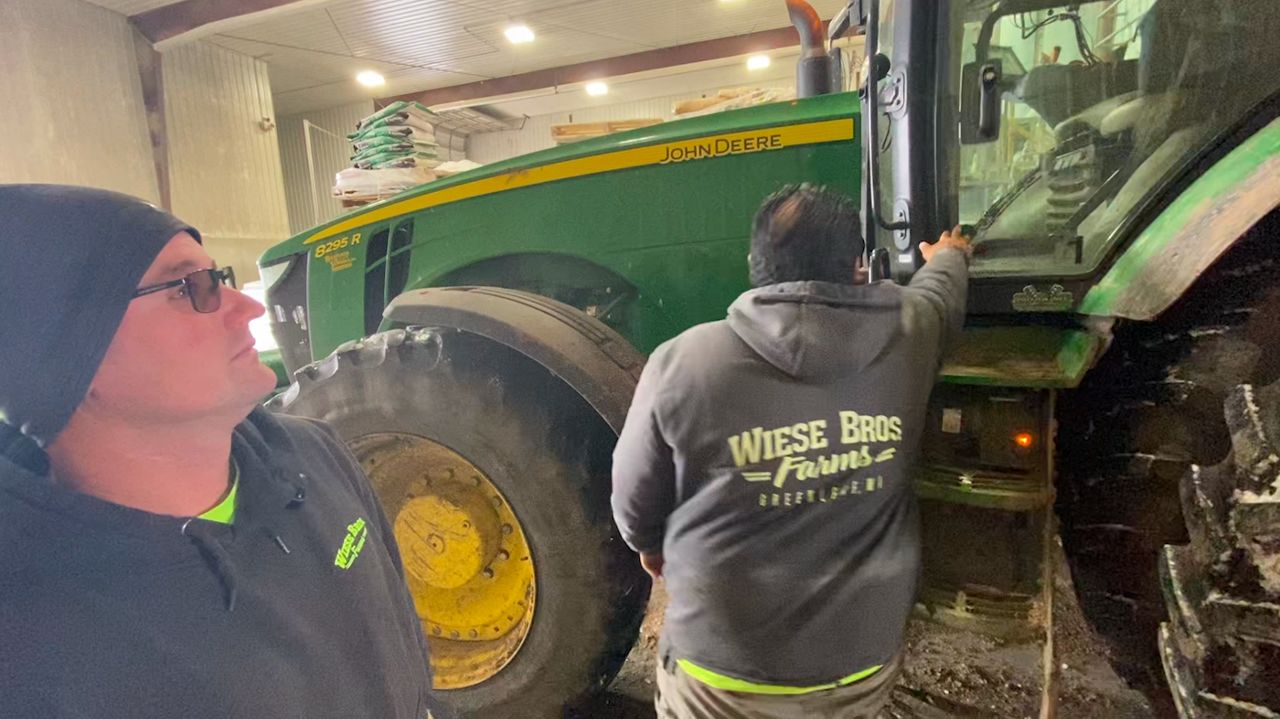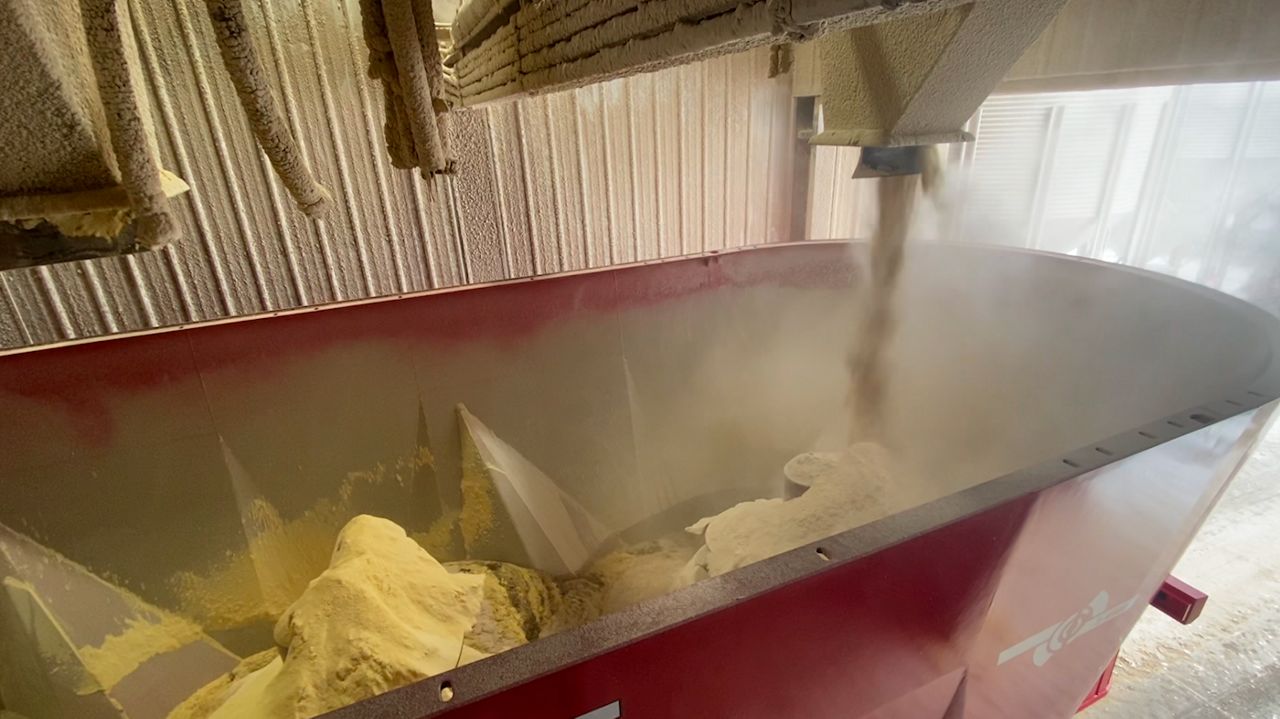GREENLEAF, Wis. — For the past few years, the cows at Wiese Brothers farm near Greenleaf have munched through several different ingredients in their feed.
What You Need To Know
- Wiese Brothers Farms in Greenleaf are feeding discarded food products to its cows
- As prices for essential farm products increase, many farmers are looking for ways to increase efficiencies
- The Wisconsin Farm Bureau Federation forecasts a 4.3% increase in the cost of a Thanksgiving meal this year
- Costs are expected to be a hurdle again in 2023
Dan Wiese, a partner in the farm, said that includes everything from pizza crusts to barley, from beer production to cranberries and cotton seed.
“Rather than a lot of that stuff ending up in the landfill, cattle are a wonderful use for that feed, both dairy and beef cattle,” he said.

It’s also an example of how farmers are using products and other methods to help increase the efficiencies of their farms. That’s become particularly important as the costs of things like fuel, feed, fertilizer and labor have shot up.
“We certainly have seen the need to trim down our feed budget and our protein budget as much as we can because those costs continue to escalate, whether it’s in the trucking costs or in the actual feed costs itself,” Wiese said. “It’s been very important to do everything we can to find low-cost commodities.”

The Wisconsin Farm Bureau Federation said it expects the cost of Thanksgiving meals to go up about 4.3% in the state this year. That’s less than some national projections, but it highlights how on-farm costs impact consumers.
For northeast Wisconsin farmers, it was generally a good year, said Aerica Bjurstrom, a regional dairy educator with the University of Wisconsin-Madison Division of Extension.
Bjurstrom said that helped cushion some of this year’s cost increases.
“The biggest key to making money, or at least not losing money, is efficiency in whatever way you can figure out to be efficient. Whether it’s using cheap inputs like waste feed or whatever it may be, or figuring out a way to plant a crop without using as much fuel, there are all kinds of ways to be more efficient,” Bjurstrom said. “That’s really the only way farmers are going to make more money doing the same thing they do every year.”
It’s expected that these costs will be a hurdle again next year.
“From what I’ve seen, inputs are going to be as much, if not more, and the prices for commodities isn’t going to be as strong next year,” Bjurstrom said. “It’s going to be a pretty tight year for margins. They’ll probably still make some money if they’re [keeping] an eye on all their expenses, but not as much as this year.”

Wiese said their farm had a good year, but it’s hard to say exactly what 2023 holds.
“We had above average yields and that was very comforting because we did have very high input costs into those crops, so getting a little above average yield is certainly helping ease some of that,” he said. “Going forward, if input costs stay very high and our grain prices and milk prices soften, that’s very scary. We look at a very, very thin margin at that point.”



